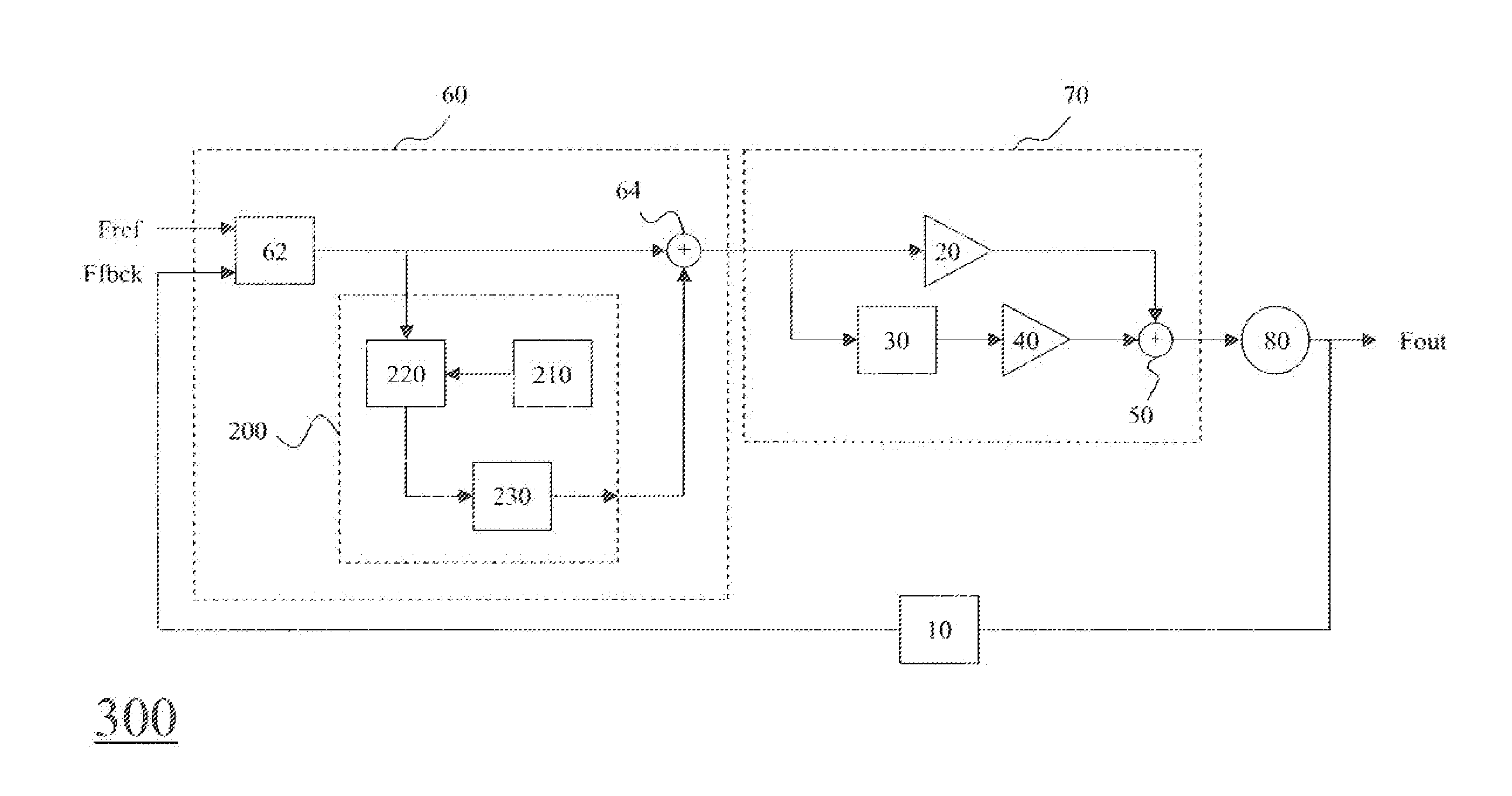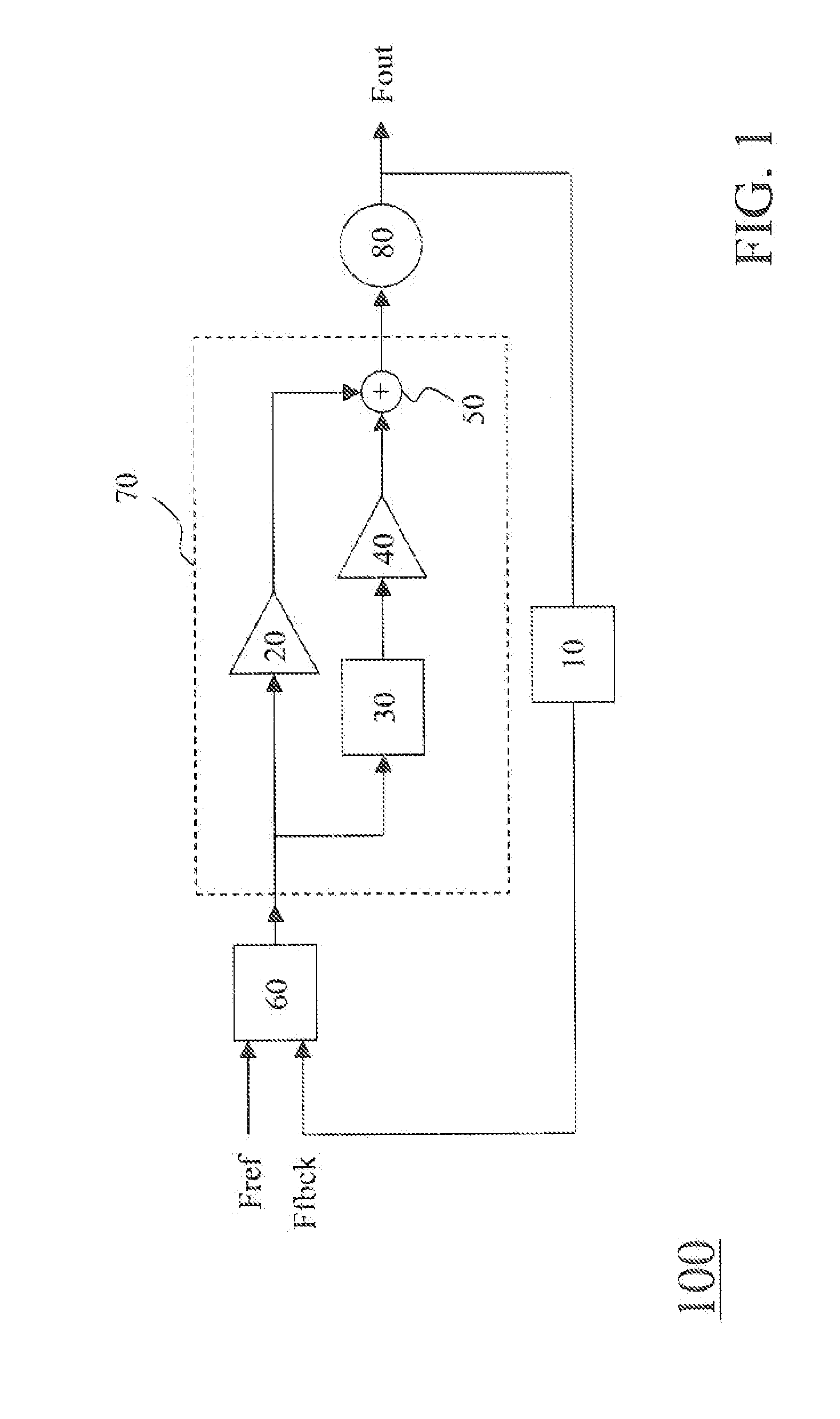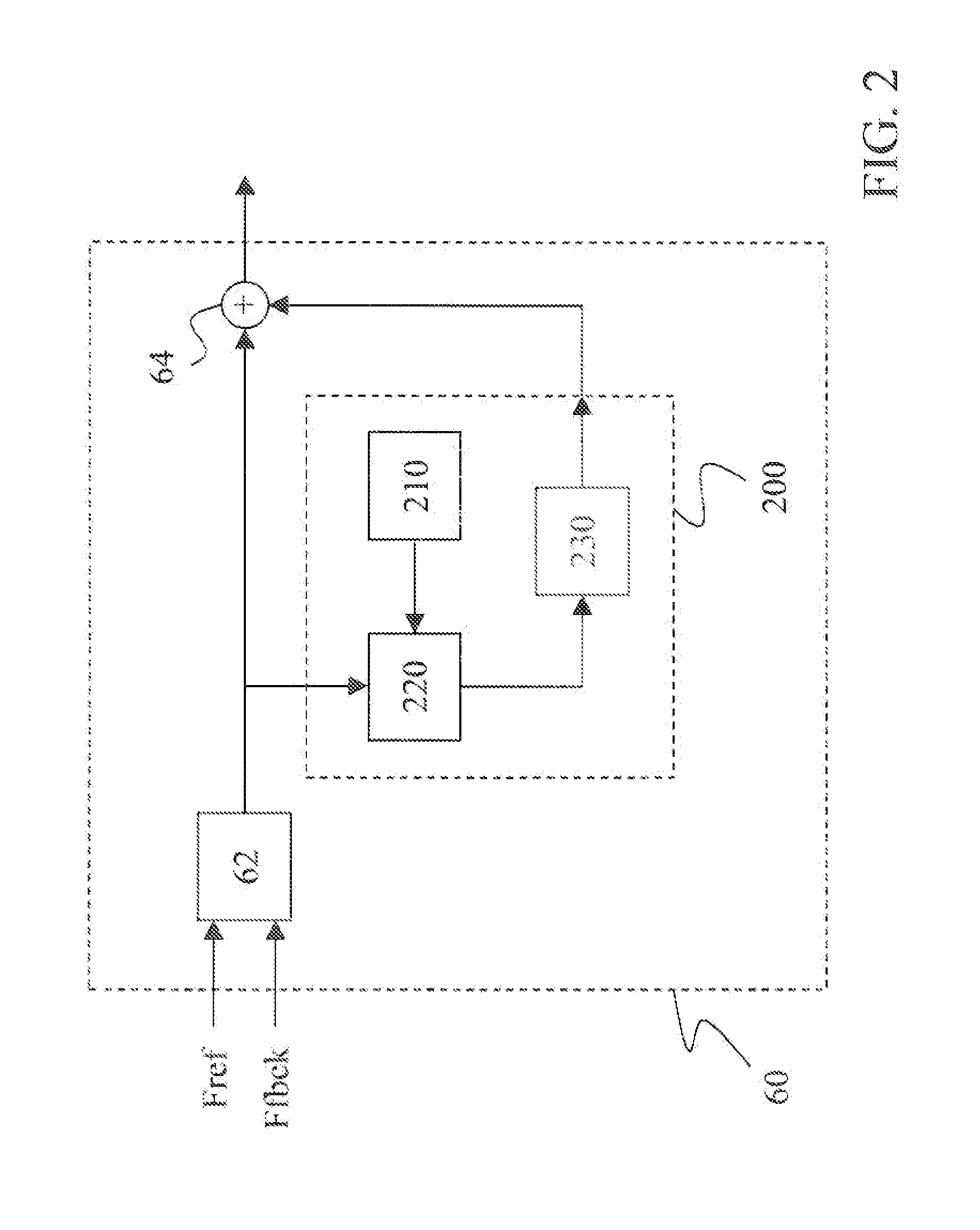Fast-locking bang-bang pll with low ouput jitter
a phase detector and fast lock technology, applied in the field of phaselocked loops, can solve the problems of low output jitter, analog pd has the disadvantage of only giving information on the mathematical sign or polarity of the phase error rather than on the signed magnitude, and achieves the effect of improving jitter (phase noise) performance in lock, fast lock times, and low cos
- Summary
- Abstract
- Description
- Claims
- Application Information
AI Technical Summary
Benefits of technology
Problems solved by technology
Method used
Image
Examples
Embodiment Construction
[0050]FIG. 2 shows a P2D 60 having an enhanced BBPD according to an embodiment of the present invention. Such a P2D 60 comprises a stand-alone BBPD 62, an additional digital circuit 200 including a sign detector 210, a counter 220 and a mapping function 230, and a summer block 64.
[0051]In order to have a configuration as simple as possible, the BBPD 62, which is also a single-bit phase digitizer or single-bit phase detector, may be implemented by a single flip-flop for example. During the phase-locking process, it detects a phase difference at its input and outputs a digital value indicating the amount of phase error ε it sees at its input. The digital value is in the form of data bits of value either “+1” or “−1” depending on the sign “+” or “−” of the detected phase difference, which sign change may occur at the zero-crossing at phase zero-degree or 180-degrees. This polarity sign “+” or “−” is detected by the sign detector 210, which provides the counter 220 with a reset signal w...
PUM
 Login to View More
Login to View More Abstract
Description
Claims
Application Information
 Login to View More
Login to View More - R&D
- Intellectual Property
- Life Sciences
- Materials
- Tech Scout
- Unparalleled Data Quality
- Higher Quality Content
- 60% Fewer Hallucinations
Browse by: Latest US Patents, China's latest patents, Technical Efficacy Thesaurus, Application Domain, Technology Topic, Popular Technical Reports.
© 2025 PatSnap. All rights reserved.Legal|Privacy policy|Modern Slavery Act Transparency Statement|Sitemap|About US| Contact US: help@patsnap.com



